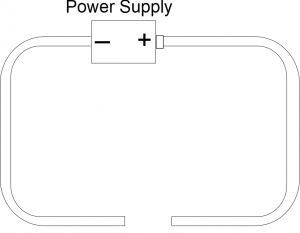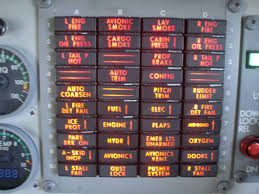Table of Contents
Project 4
Project 4A: Maverick's Wires
Outside of the town of Lakeview work is being completed on the Artemis 13 spacecraft. Another engineering and science task force titled T.R.O.J.A.N force are working with The Jet Propulsion Laboratory (JPL) Division of NASA testing a new and highly experimental spacecraft capable of in atmosphere flight as well as outer orbit maneuvering (Artemis 13). Lieutenant Pete “Maverick” Mitchell has been testing the new spacecraft now for a few weeks, including a detailed look at all the wiring in the spacecraft. His crew has been creating a model of the wire using multiple rings of charge, but they are having a difficult time justifying where the constant electric field in the wire comes from. Initially, the crew created a model of the wire consisting of multiple rings, all with the same charge. But, the field doesn't look quite right - it's not constant as expected. It's up to you to adjust the code so that it models a constant electric field.
num_points = 10
num_rings = 11
N = 11
spacing = 0.02
# Set some constants and stuff
R=0.02 #radius of ring in m
ax = vector(0,0,1) # simplify things
Q=1e-9 #charge of ring in C
oofpez=9e9 #1/(4pi epsilon_0) in N m^2/C^2
#draw axis
zaxis=cylinder(pos=-2*R*ax, radius=0.015*R, axis=4*R*ax, color=color.black)
#draw points
points = []
for i in range(num_points):
xr = 0.01*sin(i*2*pi/num_points)
yr = 0.01*cos(i*2*pi/num_points)
points.append(sphere(pos=vector(xr,yr,0.01), color=color.red, radius=5*zaxis.radius))
#make and draw rings
rings = []
ring_charge = [Q,Q,Q,Q,Q,Q,Q,Q,Q,Q,Q]
for i in range(num_rings):
loc = i - (num_rings)//2
rings.append(ring(pos=vector(0,0,spacing*loc), radius=R, axis=ax, color=color.blue, thickness=0.02*R))
# Find net field
for apoint in points:
Enet = vector(0,0,0)
for i in range(len(rings)):
aring = rings[i] # look at one ring
dq = ring_charge[i]/N #charge of a piece
dtheta = 2*pi/N #theta increment for our loop
theta=dtheta/2 #initial theta for first piece of loop
Ering = vector(0,0,0) #net electric field for single ring
rpoint = apoint.pos
scale=1.2*mag(rpoint)/8000 #used to scale the arrows representing E-field
while theta<2*pi:
rpiece = R*vector(cos(theta),sin(theta),aring.pos.z/R) #location of piece
r = rpoint-rpiece #vector from piece to point in space
rmag = mag(r) #magnitude of r
rhat = norm(r) #unit vector for r
dE = oofpez * dq / rmag / rmag * rhat # Electric field of peice of ring
Enet = Enet + dE
particle=sphere(pos=rpiece, radius=apoint.radius, color=color.yellow) #draw a particlee
theta=theta+dtheta
Evector=arrow(pos=rpoint, axis=scale*Enet, color=color.orange, shaftwidth=apoint.radius/2)
Learning Goals
- Explain what a “constant electric field” means
- Explain what a “surface charge gradient” is in context of a wire
- Explain how a surface charge gradient creates a constant electric field
Project 4B: Maverick and JPL
Outside of the town of Lakeview work is being completed on the Artemis 13 spacecraft. Another engineering and science task force titled T.R.O.J.A.N force are working with The Jet Propulsion Laboratory (JPL) Division of NASA testing a new and highly experimental spacecraft capable of in atmosphere flight as well as outer orbit maneuvering (Artemis 13). Lieutenant Pete “Maverick” Mitchell has been testing the new spacecraft now for a few weeks, and has had continuous issues with the warning light for power delivery failure to the stabilizers on the wings.

Maverick is convinced that the time between when the problem happens and when the warning light comes on is way too long, and this delay in relaying the warning to him could lead to a very problematic incident in the future. He does not want to lose another co-pilot like Goose. You have been given the task of explaining to Maverick why this could not be the case, and your boss, Clint Howard, has given you the following circuit diagram to try and aid you in your explanation to Maverick. The circuit diagram at this time does not include the warning light.
Maverick likes numbers, so part of your explanation should also include a calculation of the amount of time it takes the light to come on when the length of the wire in the circuit between the stabilizer control module switch and the warning light in the cockpit is 5.2$m$ distance. He should also understand what the electric field looks like in this circuit, and why it means that his original presumptions about the warning light “taking too long” cannot be correct. You should also correct this circuit diagram to include the warning light so that your boss has a more accurate circuit diagram to show people.
Learning Goals
- Explain what happens to the surface charges and electric field in a circuit when wires are initially connected.
- Explain why current starts to flow almost instantaneously (or rather why a lightbulb turns on immediately after to flip the switch).
- Explain why a lightbulb would not turn on if it were only connected to the positive end of the battery.
- Explain the role of the battery in lighting up the lightbulb.
Project 4C: Maverick and the Crossed Wires
 Maverick has been sufficiently convinced that the warning light cannot possibly take too long. Good job! In the meantime, his inspection of the wires has revealed a slight inconsistency in the circuit. It appears that half of the wiring is made from a 12-gauge copper wire and half is made from an 18-gauge copper wire. Maverick is worried about the affect this will have on the circuit. He has asked your team to report the effects of the different sized wires on the electric field, the surface charges, and the current in the wires.
Maverick has been sufficiently convinced that the warning light cannot possibly take too long. Good job! In the meantime, his inspection of the wires has revealed a slight inconsistency in the circuit. It appears that half of the wiring is made from a 12-gauge copper wire and half is made from an 18-gauge copper wire. Maverick is worried about the affect this will have on the circuit. He has asked your team to report the effects of the different sized wires on the electric field, the surface charges, and the current in the wires.
Learning Goals
- Explain what happens to the current in a circuit with different sized wires
- Explain what happens to the electric field in a circuit with different sized wires
- Explain what happens to the surface charge gradient in a circuit with different sized wires
- Explain how the current, electric field, and surface charge gradient are related
